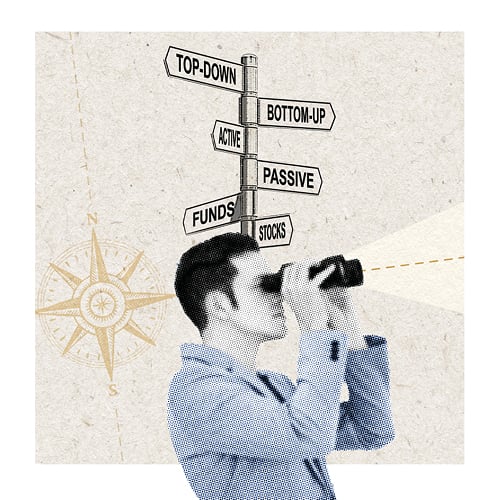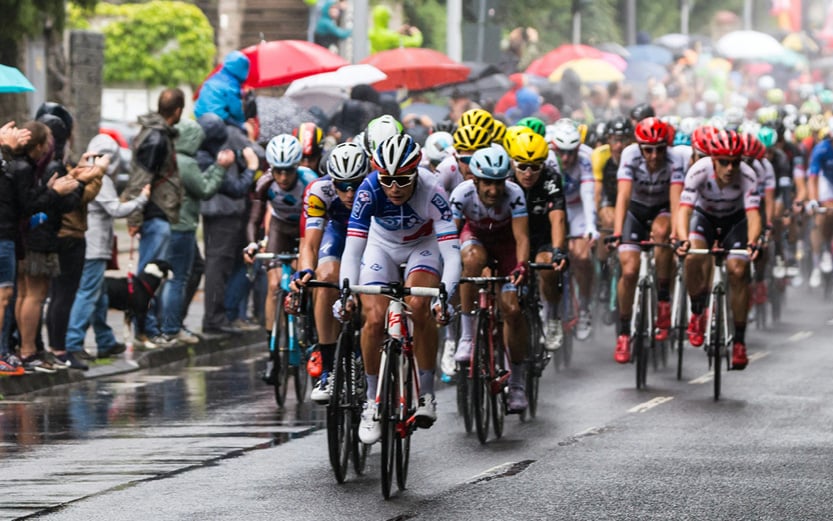Making the best investment choices
What you need to know
- Find an investment style that suits your outlook
- Decide whether you prefer ‘top-down’ or ‘bottom-up’ investing
- Consider using an active manager to help you navigate market turbulence
- Choose a wealth manager with a strong track record

‘Invest for the long haul. Don’t get too greedy and don’t get too scared.’
- Shelby MC Davis, investor and philanthropist
Most people agree that investing is the best way to preserve and grow wealth over the long term, but there are many ways you can achieve a successful investing journey.
In this sense it’s much like a physical journey, the choices you make will have an impact on how easy and quick (and how enjoyable) that journey is.
Ask yourself the following questions:
- Are you an active or passive investor?
- What is your investing style?
- Do you want to make every decision, or hand that responsibility to someone else?
These are important questions to consider before and during your investing journey, and we’ll examine each of them in this article .
Taking your hands off the wheel
Investors often believe that they will act rationally in the face of market turbulence, but the reality is often very different. Following a stock market fall it is not uncommon to see investors panic and pull their money out of the market. In doing so they lock in losses and then miss out on subsequent gains. Take the start of the Covid-19 crisis, for example. As markets plummeted, many investors rushed to sell their holdings and missed the market rebound.
By using a discretionary manager, decisions are taken out of your hands and you remove psychological influences from your investment portfolio. To return to our earlier analogy, you’re asking an experienced driver to help you on your journey. This is especially valuable if you believe you may react irrationally when you meet bumps in the road.
We believe there are many reasons to consider discretionary management rather than managing your own money. For instance, you may be happy with your portfolio today, but are you constantly monitoring your assets to ensure you have the right balance at all times?
In our busy lives it is very easy to lose track, which could leave you with a portfolio that no longer reflects your risk appetite or investment outlook. It’s rarely a wise idea to take your hands off the wheel entirely.
Investors often believe that they will act rationally in the face of market turbulence, but the reality is often very different."
Navigating the investment journey
As discretionary managers, you would probably expect us to champion the benefits of active management. Active investment management is simply the approach of actively choosing specific investments rather than passively accepting the path of the market, following a stock market or similar index.
There is a perception that investing passively removes the need for decision making entirely. However, this oversimplifies the efforts required to invest on passive basis . For example, you would need to decide on which tracker fund to use, how much you want to invest, how you will manage your holdings now and in the future, consider your approach to responsible investing and many more key questions.
Liquidity also matters. The case for passive strategies in less deep, illiquid markets, such as emerging markets and even credit markets is less persuasive. In such fragmented markets, it may be easier to choose an investor with a thorough local knowledge to analyse the market and select suitable investments.
There are also other factors to consider. For investors who consider sustainable investing to be important, one should note that passive funds do not engage with companies on such topics. A good active manager will participate in shareholder votes and engage with boards and management teams.
Fees are another consideration. While, on the surface, passive funds are typically less expensive than active management, there is also a cost of managing your own money. Your time is valuable, and it may be spent better elsewhere. Investors should also make sure they consider platform fees, underlying fund fees and any other charges associated with passive investing.
Some investors will choose the ‘best of both worlds’ and have a combination of passive and active management.
For instance, it would not be uncommon for an investor with £10 million in assets to divide their pot into £7 million invested with a discretionary manager, £2 million in tracker funds and the remaining £1 million in cash. A wealth manager should be able to help find the right split for you.
Driving investment growth
Another crucial decision is to choose an investing style that suits your outlook. A 'bottom-up’ view involves assessing individual companies and funds on their own merits, whilst a ‘top-down’ style identifies sectors and markets and choose to allocate capital to those deemed desirable.
Investors using the top-down approach focus on factors like economic growth and interest rates to guide their decisions. It’s common to get a result that simulates that of the overall market.
By contrast, bottom-up investing begins by examining companies' fundamentals, such as financial health, management quality and competitive advantages. These investments are typically made with a much longer-term view and performance may be very different from the overall market and peers for extended periods.
There are merits in both approaches. At Rothschild & Co Wealth Management UK, rather than ‘buying the market’, our focus is on preserving and growing the real value of our clients’ wealth over the long term. We select assets whose long-term fair value we believe is higher than their current market price. Our actively-managed, bottom-up investment approach is designed to outpace inflation, deliver sustainable growth and avoid permanent capital losses.
We spend an extensive period of time building our understanding of the fundamentals of each investment. We believe this deep, fundamental research enables us to add significant value.
Individual investments can at times be significantly mispriced relative to their perceived long-term intrinsic value. Our in-depth knowledge means we can move quickly to purchase shares cheaply if prices fall.
It also allows us to invest with conviction and focus on a core group of holdings, which we continuously monitor to ensure they are delivering for our clients. This portfolio concentration is key. Research suggests that the benefits of portfolio diversification can be achieved with as few as 12 to 18 stocks, and the benefits of diversification start to disappear once a portfolio has more than 30 stocks.1
We spend an extensive period of time building our understanding of the fundamentals of each investment."
A reliable record
While past performance is no guide to future results, it’s always a good idea to consider the reliability and track record of a wealth manager. To return to our analogy, you want to choose a car with a good record of safety and performance.
Asset Risk Consultants (ARC) has been collecting data on wealth managers for the last 20 years. It now compiles information from 125 contributors, made up of 350,000 underlying client portfolios with assets in excess of £1.5 trillion, as of December 2023. This is a good place to start when looking to compare the output of investment performance of the investment managers you may be considering.
Across all our GBP and USD strategies, for which there is a relevant ARC performance comparator, we were ranked top quartile for performance over a three, five, 10 and 20-year time period, to December 2023.
Based on the return of a typical sterling ‘steady growth’ investment strategy, a £10 million portfolio would have grown to £29.5 million over the 20 years to December 2023. An investment into a Rothschild & Co portfolio over the same 20-year period would have increased to £35.7 million. This is £6 million more than the return from the average portfolio.
Whether you’re a passive or active investor, or prefer a bottom-up or top-down approach, you should understand your investment style and beliefs. There will be many bumps along your investing journey, so take your time to consider which path is the right one for you.
Ready to begin your journey with us?
Citations
[1] How Many Stocks Make a Diversified Portfolio?, Meir Statman, The Journal of Financial and Quantitative Analysis, September 1987
Past performance is not a guide to future performance and nothing in this article constitutes advice. Although the information and data herein are obtained from sources believed to be reliable, no representation or warranty, expressed or implied, is or will be made and, save in the case of fraud, no responsibility or liability is or will be accepted by Rothschild & Co Wealth Management UK Limited as to or in relation to the fairness, accuracy or completeness of this document or the information forming the basis of this document or for any reliance placed on this document by any person whatsoever. In particular, no representation or warranty is given as to the achievement or reasonableness of any future projections, targets, estimates or forecasts contained in this document. Furthermore, all opinions and data used in this document are subject to change without prior notice.





